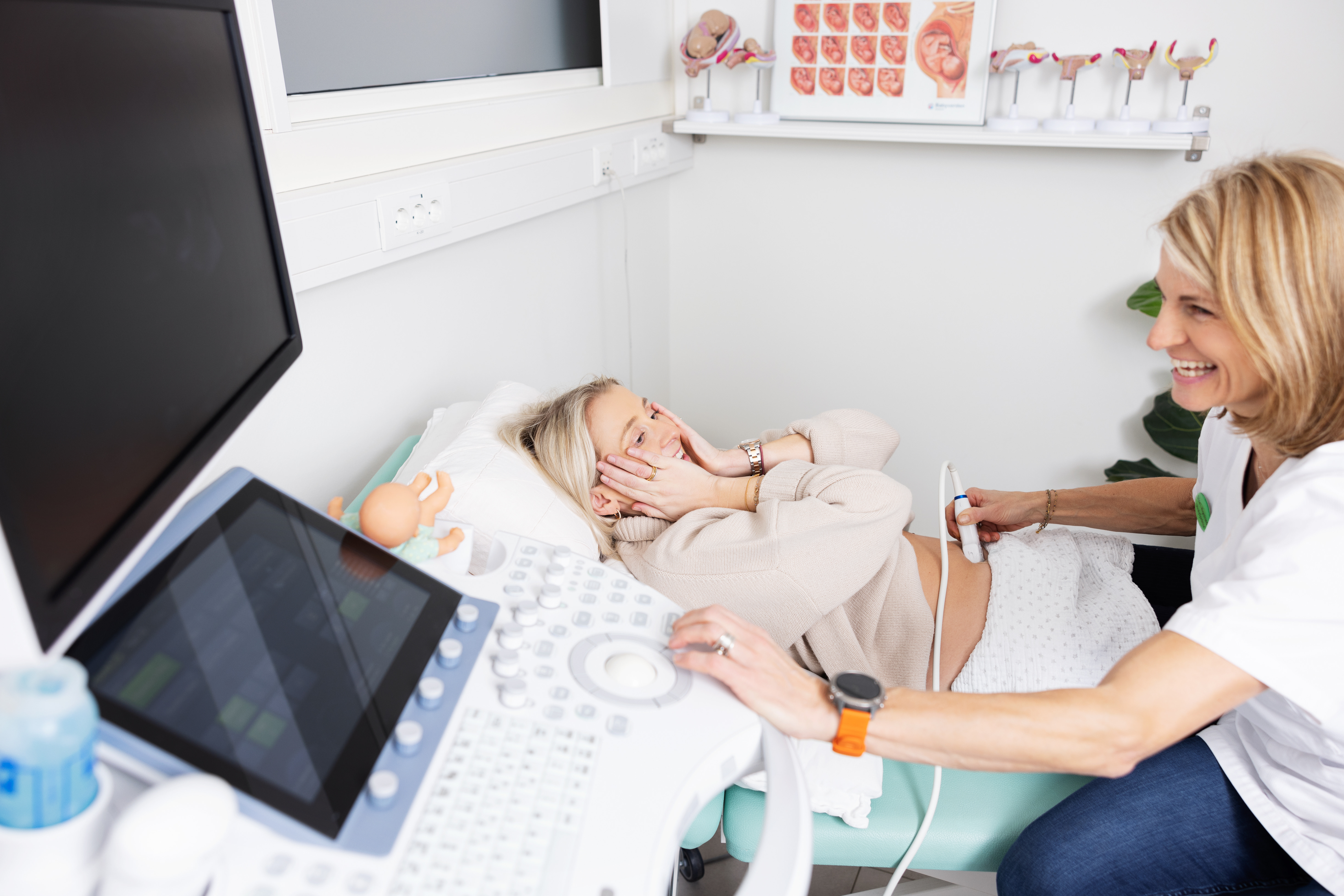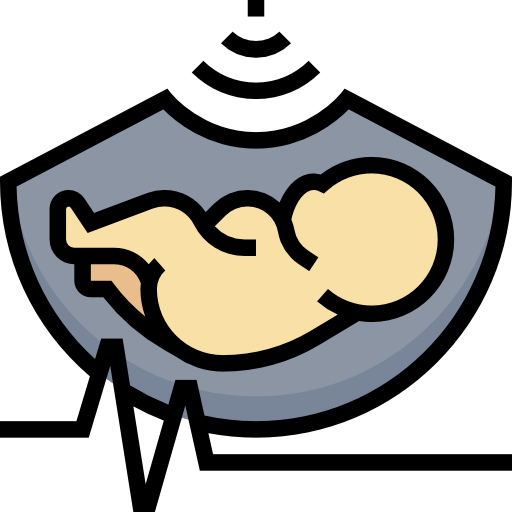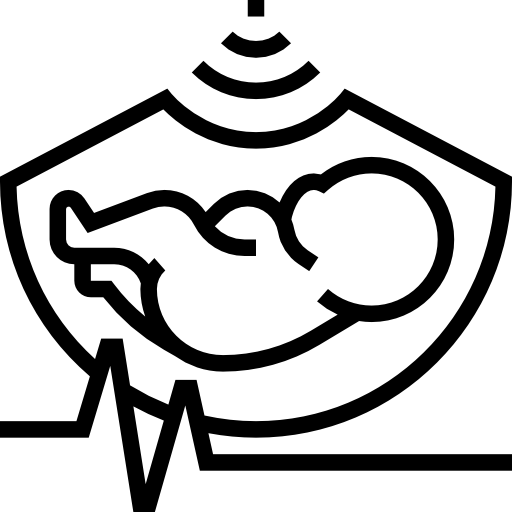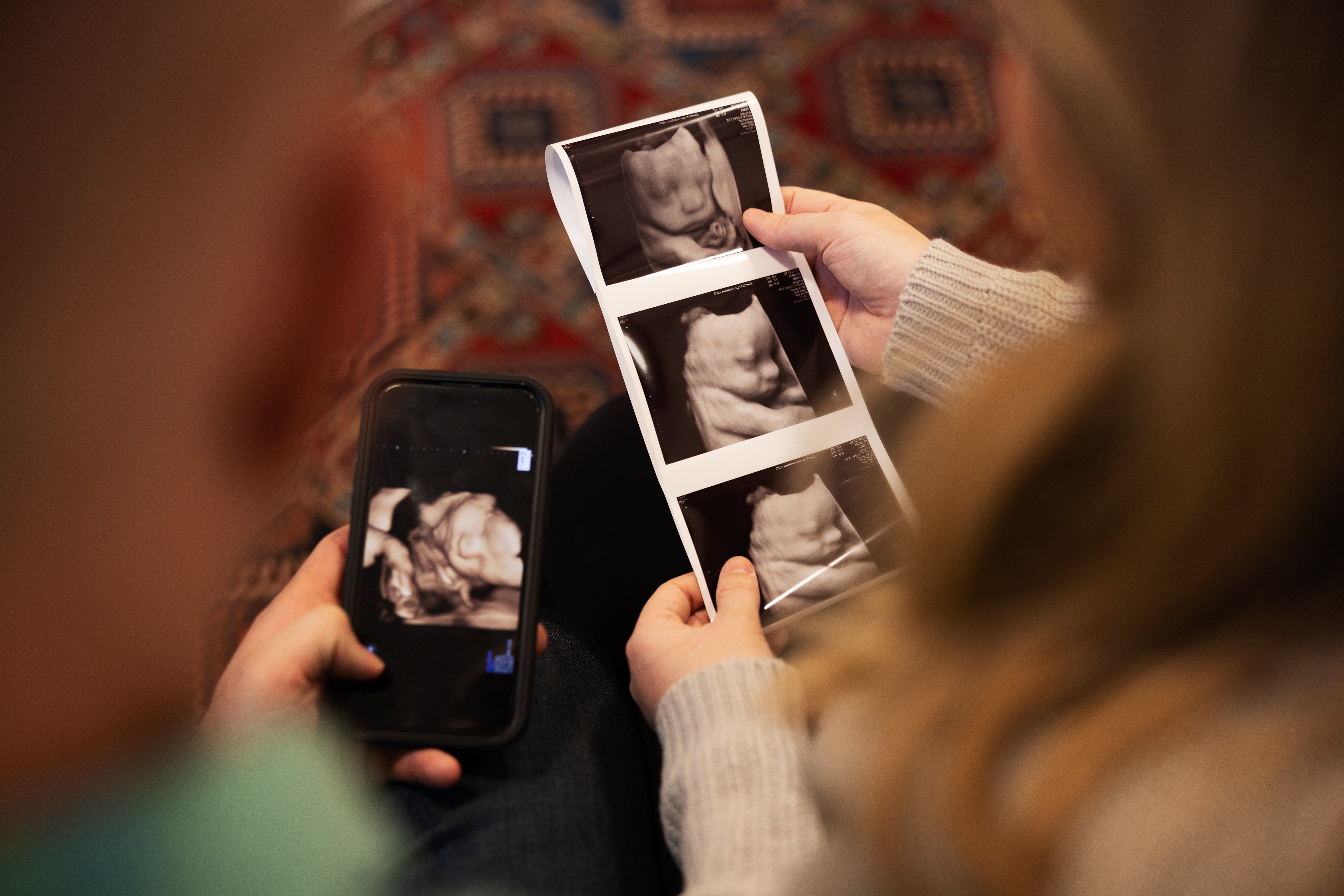
Ultrasound week 15-40
At Oslo Midwife and Ultrasound Clinic we offer different types of ultrasound examinations throughout the pregnancy. We want your visit at our clinic to be a personalised and a pleasant experience. We allow ample time for the actual examination.
Read more about the different weeks under.

2D ultrasound week 15-20
During this examination, we will look at all the organs of the fetus. We look at the head, brain, spine, neck, heart, stomach, kidneys, bladder, arms and legs and assess the amount of amniotic fluid.
Read more.

2D ultrasound week 18-25:
Extended heart examination/ echocardiography
Echocardiography is an extended ultrasound examination of the fetal heart, recommended to be performed between pregnancy weeks 18-25.

2D ultrasound week 17-21: routine ultrasound
The public health system offers all pregnant women an ultrasound examination during pregnancy, also called a routine ultrasound.
Read more.

2D ultrasound week 20-25
During this examination, we will look at all the organs of the fetus.
Read more.

2D ultrasound week 32-40
This examination is done in 2D. The examination is primarily a growth and well-being check.
Read more.

We send the pictures/videos to your phone
All ultrasound examinations include photos and films sent directly to your mobile phone(s). (Unfortunately, the files do not come with audio)
It’s nice if you bring a companion with you. The experience can be somewhat diminished if there are too many people present. This has to do with both space and potential noise issues. Our experience is that children under the age of 5–6 don’t have the proper understanding or appreciation of the ultrasound examination.
FAQ
What is ultrasound?
2D (two-dimensional) ultrasound is sound waves that are transmitted from a probe into the body. The sound waves have such a high frequency that they’re inaudible to the human ear.
When the sound waves hit the body tissue, an echo occurs. The echo causes the sound waves to return to the sound head, which captures these sound signals.
After processing on a computer, the incoming audio signals appear as vivid images in black and white on a screen.
Is ultrasound dangerous?
Ultrasounds of pregnant women have been performed for more than 40 years. No adverse effects on women or foetuses have been recorded.
What happens if a missed abortion (MA) is detected at an early ultrasound?
Sometimes it happens that we do not see cardiac activity. This is usually due to a chromosomal abnormality.
We measure the embryo and refer the woman to the hospital she belongs to. Normally she will get an appointment in a few days. There, a gynaecologist will confirm the finding and a surgical or medical abortion will be performed.
The next day we send her a message to check in on her.
In case of suspicion of illness or abnormalities, what happens next?
The midwives who perform ultrasound have completed one year of foetal diagnosis at the National Centre for Emergency Medicine at NTNU. If we see pictures that deviate from the normal we will refer the woman to a maternal-foetal medicine specialist at the National Hospital. She’ll then get an appointment within a few days.
When is ultrasound done internally (vaginal), and on the stomach (abdominal)?
We perform ultrasound vaginally early in the pregnancy, that is, from weeks 6–12. This is because the embryo is so small and the pictures become much clearer on an internal ultrasound.
The woman must lie with her legs in the leg holder with a towel over her. Most people have no problems with this.
Occasionally we also do an internal ultrasound in week 12. This is if the woman has a uterus that is turned slightly backwards or if she’s overweight.
In the case of a 3D ultrasound, the examination is done abdominally.
.jpg?width=200&height=117&name=OJUK%20logo_m%20bindestrek%20(002).jpg)